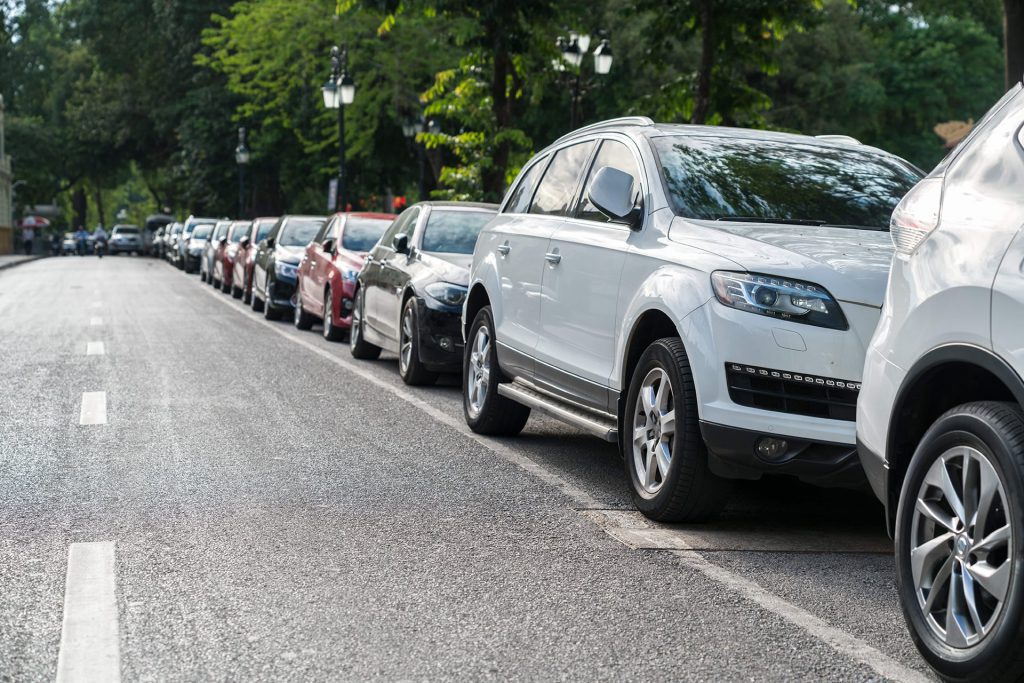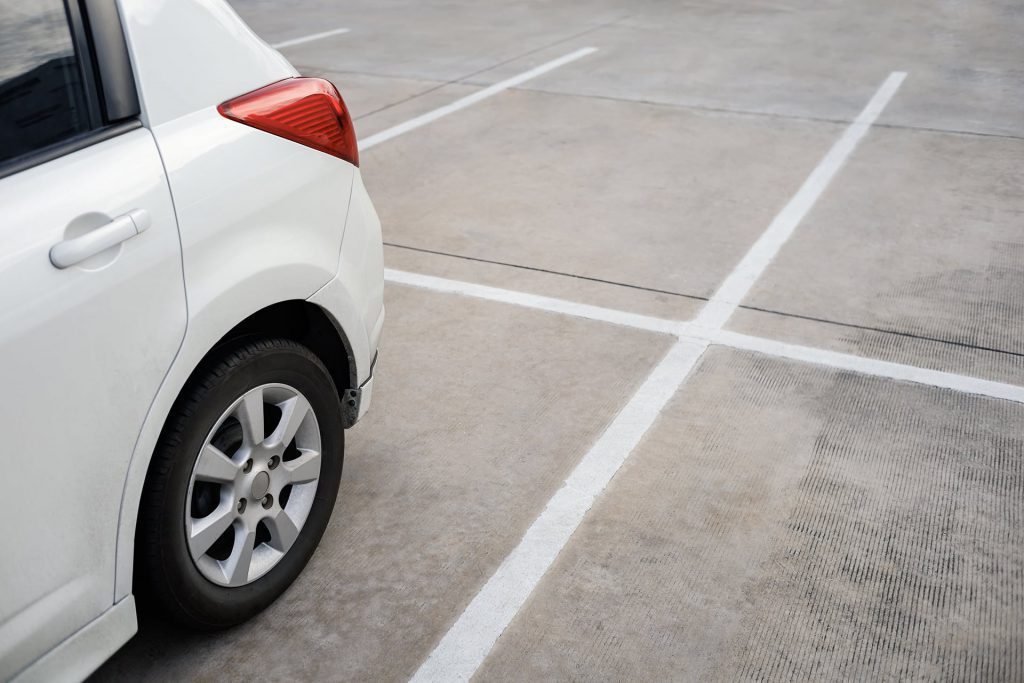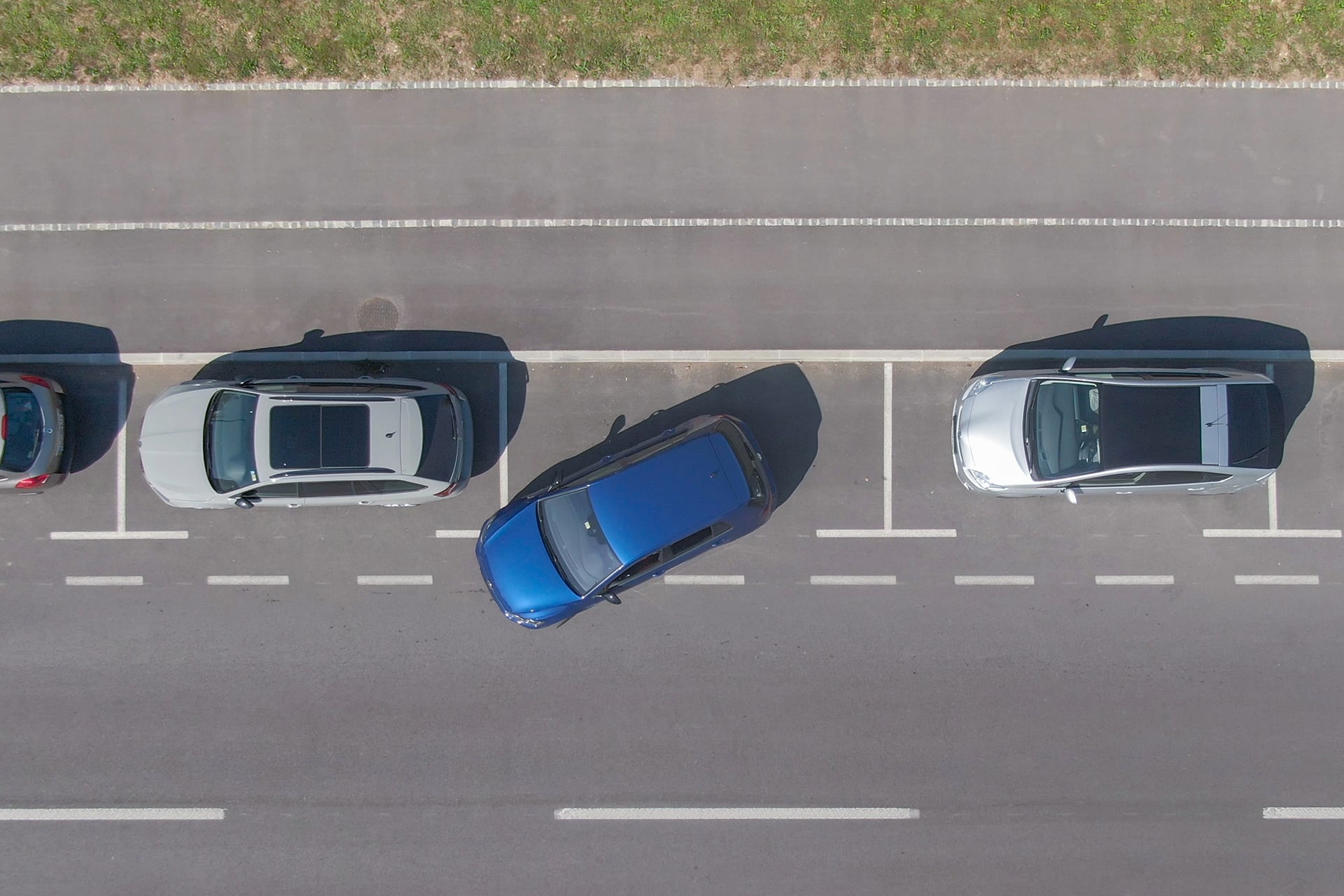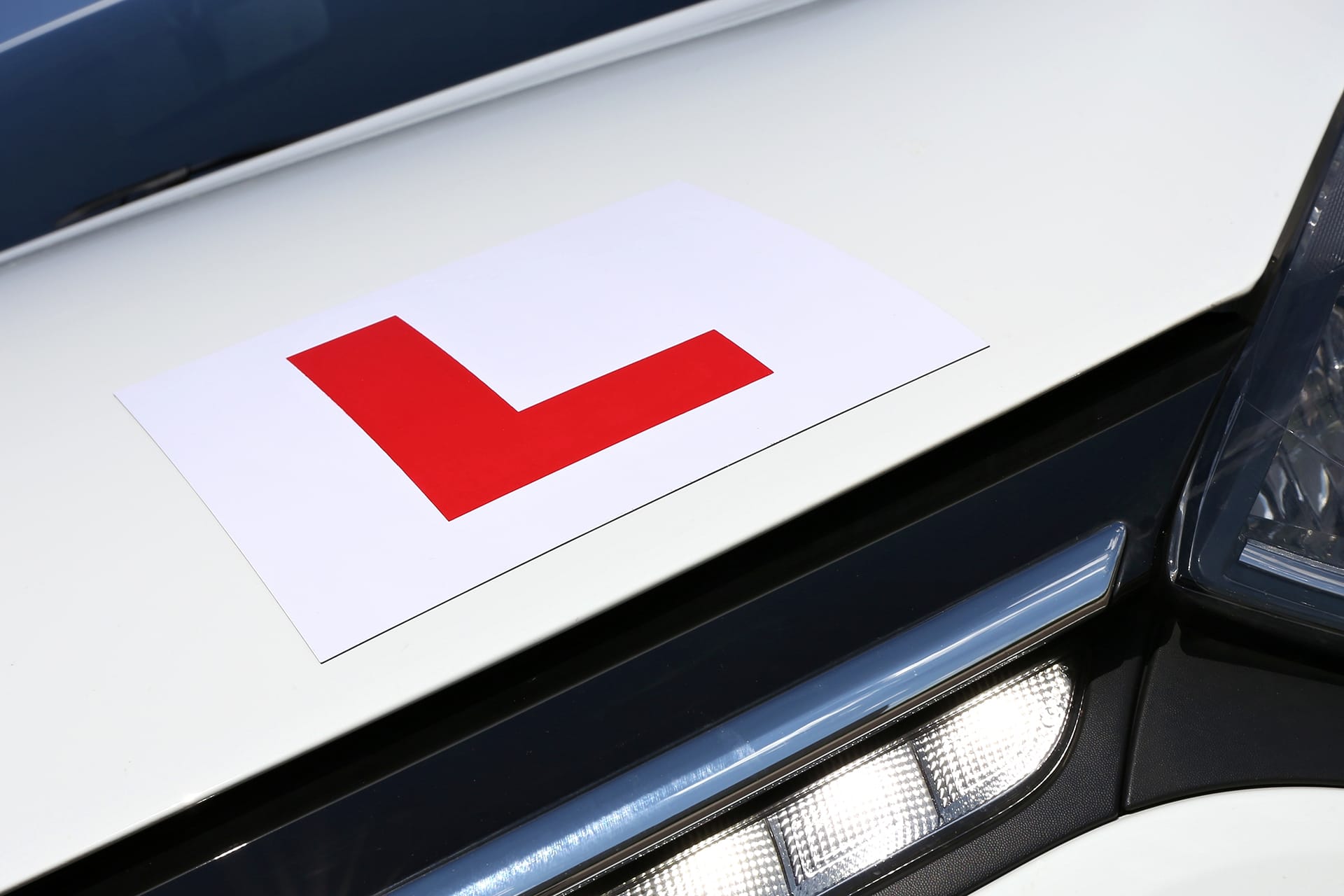The practical driving test can be nerve-wracking for even the most confident of learner drivers, with the main stress often being the manoeuvres section.
Whether you’ve booked your test or have just started to learn to drive, practising and understanding the driving test manoeuvres is crucial for success. From parallel parking to hill starts, we’ll walk you through everything you need to know about the GB driving test manoeuvres and how to ace them.
What does the GB driving test include?
The GB practical driving test is made up of five separate parts and lasts around 40 minutes. As part of the test, you will be asked by the examiner to demonstrate one manoeuvre from a pre-determined list. In order to pass your test you’ll need less than than 15 minor driving faults and no major or dangerous faults. Take a look at our comprehensive GB driving test blog for full details on what the GB driving test includes and how to ace it.
What are the different driving test manoeuvres?
Manoeuvres are an essential part of the GB practical driving test, and are included to assess your control of the vehicle. There are 3 types of manoeuvres your examiner will choose from on the day, but you will only be asked to carry out one of them during your test. These include:
- Parallel parking
- Pulling up on the right-hand side of the road
- Bay parking (forward or reverse).
Parallel parking
Often described as one of the most complicated manoeuvres on the driving test, the trick to parallel parking is to be meticulous on your mirror checks and steering. This manoeuvre can be particularly helpful if you live in a city or area where parking is restricted.
What is parallel parking?
Parallel parking requires the driver to park their vehicle parallel to the road, usually in a space between a line of already parked vehicles. If asked to perform a parallel park, you will need to pull up beside a vehicle and reverse into a spot behind it.

How to parallel park
-
- Pull up alongside the space you want to park in. Check that this space is large enough for your car. It is recommended to leave around a 2 foot gap at either end of your car to allow you (and the cars either side of you) enough space to pull out and drive away.
- Pull up alongside the car. Use your mirrors to check it is safe to move, and slowly pull up alongside the car you will be parking behind. You should leave around 1 metre between you and the parked car.
- Mirror, signal, manoeuvre. Check your mirrors and blind spots and select reverse gear. Slowly begin reversing, keeping your eyes on your rear view mirror as you do. Aim to line up the back of your car with the parked car next to you.
- Find your reference point. When the back of your car is level with the parked car next to you, start to turn the wheel left towards the kerb as you reverse. Make sure to check your blind spots and mirrors as you do so. Now you can start to look for your next reference point which should be when the left corner of your car lines up with the right corner of the parked car.
- Don’t rush. Turn your wheel so that your car is at a 45 degree angle as you reverse into the space. Don’t rush this part and keep checking your mirrors and blind spots.
- Full lock and straighten. Turn the wheel to full lock right (away from the kerb) when the front of your car is clear of the back of the car in front of you. When you’re parallel to the kerb, you can start to straighten your steering wheel and complete your manoeuvre. You can use the space in front or behind you to make any small adjustments to ensure your car is central in the parking space.
- Come to a stop. Bring the car to a controlled stop, put your handbrake on and put the car into neutral. You will be asked to move off when your examiner is ready so make sure to complete your mirror, signal, manoeuvre checks as you do so.
Pulling up on the right-hand side of the road
This is one of the most controversial driving test manoeuvres, due to the Highway Code not recommending drivers park against the flow of traffic. However, the DVSA argues it can be useful in real life situations. It can also be one of the most straightforward manoeuvres to demonstrate on your test.
What is pulling up on the right?
Pulling up on the right-hand side of the road is exactly what it sounds like. It requires you to pull up on the right-hand side of the road when it is safe to do so, reversing back 2 car lengths and then safely rejoining the traffic on the correct side of the road.
How to pull up on the right-hand side of the road
-
- Find a safe location. Firstly, you’ll need to find a safe and suitable location to pull up. You should try to avoid driveways, bends, junctions or areas where you will bring disruption to other road users.
- Mirror, signal, manoeuvre. Check your mirrors and blind spots and signal to move towards the right-hand side of the road. When it is safe to do so you can begin to move off.
- Pull up on the right-hand side of the road. Move over to the right-hand side of the road, position yourself parallel to the pavement and avoid hitting the kerb. When you are happy with your positioning, stop the car, put your handbrake on and put the car into neutral.
- Reverse 2 car lengths. Check your mirrors and blind spots and slowly and carefully reverse 2 car lengths, keeping an eye on your surroundings as you do so. Once you’ve moved back 2 car lengths, come to a stop, put your handbrake on and put the car into neutral.
- Move off. Once your examiner is ready, they will ask you to move off from your position. As you do so, make sure to complete your mirror, signal, manoeuvre checks
Bay parking
Bay parking is a useful everyday driving skill. It can be particularly helpful if you are in a busy car park with limited spaces. Once you’ve mastered this manoeuvre you can be confident parking in tight bay spaces when required.
What is bay parking?
There are two types of bay parking:
- Forward bay parking
- Reverse bay parking.
Forward bay parking is the manoeuvre of driving your car nose first in to the parking bay and reversing out. Reverse bay parking is the manoeuvre of reversing your car rear first into the parking bay and driving forwards out.

How to forward bay park
- Choose your bay. It is entirely your choice which bay you choose to park in when asked to demonstrate this manoeuvre on your test. If you can, avoid bays with vehicles on either side and choose a bay that is on your right so that you can see the lines more easily.
- Positioning. Once you’ve chosen your bay, position yourself across from the parking bay leaving as wide a turning circle as possible to give yourself plenty of room to swing the car round into the bay.
- Mirror, signal, manoeuvre. Check your mirrors and blind spots and signal your intention to move. Slowly move towards your bay until the right-hand line of your bay lines up with your right wing mirror, this will be your point of reference to begin turning the steering wheel.
- Steer and move. Once you’re satisfied it’s clear to move into your bay, slowly start to move forwards with a full lock on your steering wheel, edging slowing into the bay.
- Enter the bay. As you move further into the bay, straighten up the car and ensure your vehicle is comfortably within the marked lines. When you’re satisfied with your parking, come to a stop, put your handbrake on and put the car into neutral.
- Reverse out of the bay. Select reverse and complete your mirror, signal, manoeuvre checks before moving off. Reverse slowly back and at your reference point, turn your steering wheel to exit the bay on to the correct side of the road. Once you’re clear of the bay, move to first gear, complete your mirror, signal, manoeuvre checks and move off.
@dayinsure Learning to drive? Master the basics with private practice 🚙✨ Check out the link in our bio for more info 📲 #learntodrive #learningtodrive #parking #baypark #learnerdriver
How to reverse bay park
- Choose your bay. As with forward bay parking, choose a bay that doesn’t have vehicles either side and one that you will find easiest to reverse into.
- Positioning. Once you’ve chose your bay, drive 2 car lengths past the bay and position yourself across from it, leaving as wide a turning circle as possible.
- Mirror, signal, manoeuvre. Complete your mirror, signal, manoeuvre checks and slowly begin to reverse and turn your steering wheel.
- Steer and move. Guide your car into the bar using your steering wheel, remembering to constantly check around you using your mirrors and blind spots. As you get closer to the bay, the left-hand line of the bay will be visible in your left wing mirror.
- Enter the bay. As you move further into the bay, straighten up the car and ensure your car is comfortably within the marked lines. When you’re satisfied with your parking, come to a stop, put your handbrake on and put the car into neutral.
- Drive out of the bay. Select first gear and complete your mirror, signal, manoeuvre checks before moving off. Drive slowly forwards out of the bay, turning on to the correct side of the road as you do.
@dayinsure How to reverse bay park like a pro 👏🏼 #drivingtest #parking #learnerdriver #reversebaypark #driving #baypark
Other manoeuvres to help you on your driving test
Some manoeuvres were dropped from the list that examiners could test you on when the driving test was updated back in 2017. Whilst you won’t be tested on these manoeuvres any more, they’re still really important to know and can help you with your day-to-day driving.
Reverse around a corner
Reverse round a corner was removed from the driving test in 2017. Whilst you won’t need to know the ins and outs of the manoeuvre to pass your driving test, it’s still a great skill to have and one that many drivers use on a daily basis.
What is reversing around a corner?
Just as it sounds, the reversing around a corner manoeuvre requires you to reverse your car around a corner, keeping close to the kerb, in a controlled manner whilst watching out for all other road users. It’s a great alternative to a turn in the road if you find you need to turn your car around.
How to reverse around a corner
- Locate the side road. As you’re driving along, locate the side road you’d like to reverse around the corner into. In a driving test, the examiner would ask you to pull up on the left-hand side of the road before the side road; however, as this manoeuvre isn’t on the driving test any more, this isn’t essential.
- Drive past the side road. As you drive past the side road with your chosen corner, look down the road to ensure it is clear and you will have space to reverse into it. Pull up on the left-hand side of the road, ensuring to complete your mirror, signal, manoeuvre checks. Make sure that you are parallel to the kerb and not too close to it.
- Reverse to your turning point. Once you’ve completed your checks, begin reversing slowly straight backwards until you find your point of turn. The point of turn will be around when the corner of the kerb can be seen in your left-hand mirror.
- Reverse around the corner. Once you’ve reached your point of turn you can begin to steer towards the left, angling the car down the side road. At this point you should check around your car again for any hazards or pedestrians, etc. Keep your distance from the kerb and once you have slowly reversed around the corner you can straighten your car up, ensuring you’re parallel to the kerb.
@dayinsure How to easily reverse round a corner 🚙👏🏼 #drivingtest #learnerdriver #learntodrive #reversing
Turn in the road
Turn in the road, or three-point turn, was another manoeuvre that was taken off the driving test in 2017. It is a handy manoeuvre to be able to do and one that comes up in many real-life driving situations.
What is a turn in the road?
A turn in the road is a manoeuvre that allows the driver to turn their car around in the road. It’s perfect for when you have a wide road or no side roads to use the reverse around a corner manoeuvre. Most situations allow for drivers to be able to complete this manoeuvre in three moves, hence it’s alternative name of the three-point turn.
How to do a turn in the road
- Pull up on the left-hand side of the road. Pick a safe location to park up of the side of the road using your mirror, signal, manoeuvre checks, avoiding areas around any driveways, bends or junctions to make your manoeuvre as easy as possible.
- Steer into the road. Once you’re happy that the road is clear and it is safe to do so, signal right and steer slowly into the opposite side of the road. When you begin to reach the opposite kerb, very quickly steer full lock to the right and come to a stop.
- Reverse. Make sure to carry out your observations and checks again and begin to slowly reverse back towards the kerb on the other side of the road. When you begin to reach the kerb, very quickly steer full lock to the left and come to a stop.
- Move off. Complete your observations and checks again, select first gear and move off slowly bringing the car on to the correct side of the road, facing the opposite direction from where you first started.
@dayinsure Three point turns might not be on the driving test anymore but it’s still a helpful manoeuvre to know how to do! Practice your manouvres in your own time with our learner insurance 🚙 #learntodrive #learningtodrive #learnerdriver #drivingtest
What else do you need to know about driving test manoeuvres?
Will I be asked to carry out all manoeuvres on a driving test?
You wont be asked to carry out all of the possible manoeuvres on your driving test, but your examiner will choose one from the pre-determined list to ask you to demonstrate (parallel park, bay park or pull up on the right-hand side of the road). It is crucial to practise each manoeuvre thoroughly as you won’t know in advance which one you will get on your test day.
Can you fail a driving test on a manoeuvre
Examiners assess your ability to perform the driving test manoeuvres safely and accurately. If you fail to do this, it can result in a test failure. You can be given minor driving faults for failing to carry out a manoeuvre correctly (e.g. not checking your mirrors frequently enough) that could add up to a fail, or major driving faults for dangerous driving which would result in an automatic fail.
How can I prepare for driving test manoeuvres
Preparation is key to mastering driving test manoeuvres. The more time you get in the car going over the ins and outs of these manoeuvres the more confident you’ll feel on the day and more likely you’ll be to nail the manoeuvre when asked to demonstrate it. A great way to prepare yourself for driving test manoeuvres is to spend time in private practice with friends or family.
Get covered as a learner driver with Dayinsure
As you get out and about practising manoeuvres for your driving test, it is essential that you are properly covered with learner driver insurance. Dayinsure’s short-term learner driver insurance is fully comprehensive, giving you peace of mind whilst out on the roads.
Our flexible cover can be tailored to suit your needs, with insurance available from 1 day up to 5 months. Find out more about our learner insurance here and get a quote today.



